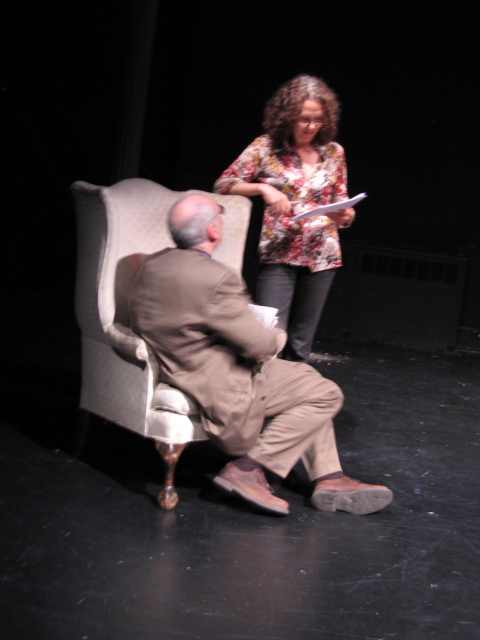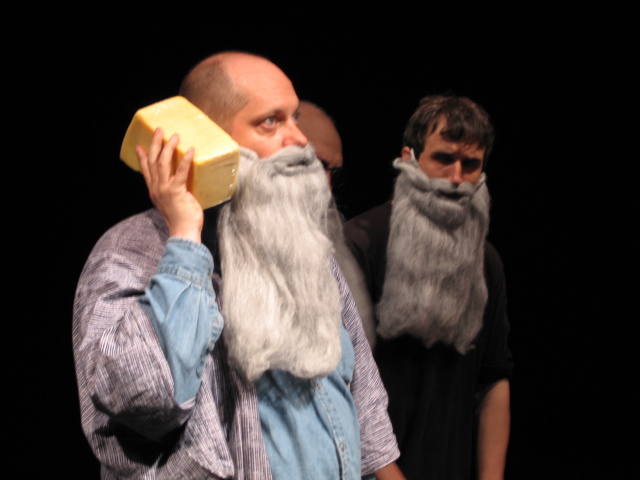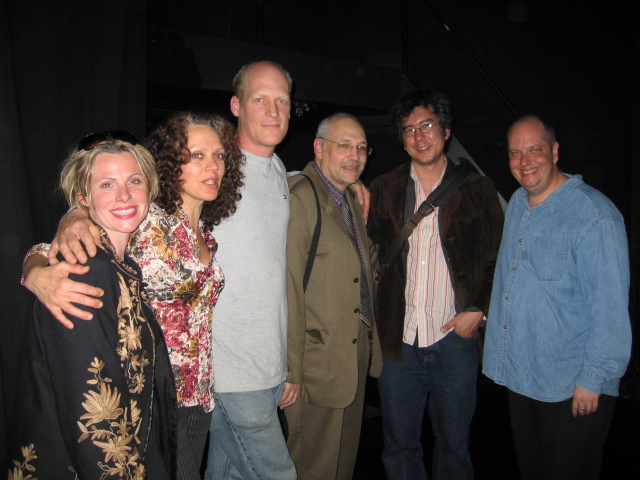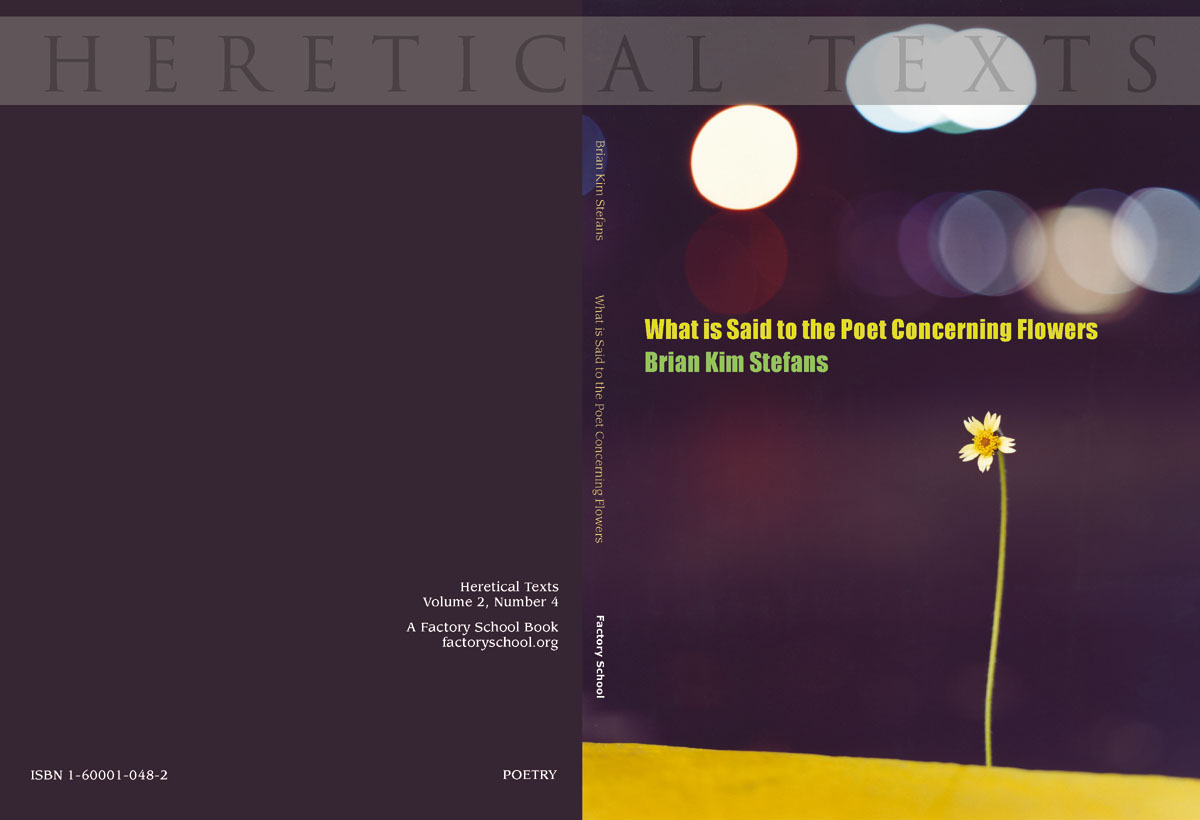
It’s no secret that I am a huge Ian Hamilton Finlay fan. Finlay died of cancer last Monday at the age of 80.Â
I was lucky enough to meet Finlay’s son, Eck, at a poetry reading I did in New York on St. Patrick’s day. I forget exactly what year this was, it must have been 1996, when the holiday fell on a Sunday, or 1995, when it fell on a Friday (the most recent one on a Saturday was 1990, when I was still in college). I was subbing for Melanie Nielson, and because of the holiday the Ear Inn didn’t want to host the reading. In any case, I read to a not very packed house at a tea shop near by with Norma Cole — the only other notable event was that I accidentally brushed dandruff into Jackson Mac Low’s soup, and I met Erica Hunt that day but didn’t know it was her because she sat alone, with her child, at the back (actually, very front) of the room, and I assume she was some woman who stopped by on a whim.
I saw Eck give a talk about his father’s work later that week at Teacher’s and Writers. Because his father was an agoraphobe, Eck used to give talks about his work around the world, which afforded him a great chance to meet poets outside of the UK. I had seen Finlay’s work in a hard-cover anthology of British Poetry that was decades old — the famous Circus poem had blown me away – and Mary Ann Caws, one of my teachers at the CUNY Grad Center years earlier, had leant me some books (she referred to him as one of the two geniuses she had ever met, the other being, I believe, Breton). So, this was a very fortuitous meeting.
I didn’t see Eck much after that, but in 1998 I went to London to spend time with Miles Champion, and while there met Thomas Evans, a good friend of both Miles’ and Eck’s, who invited me to a party at Eck’s apartment in Edinburgh. I remember being keen on seeing a reading in London at the same time at Subvoicive, the sort of equivalent of the Ear series over there, but it was an Ann Waldman reading, so I felt it was probably something I could miss as I’d seen Ann read numerous times already. (I’ll never forget the phone call I had with Tim Atkins about this dilemma — he said “a reading by Ann Waldman or a weekend on the Scottish shore… let me make your decision for you.â€)
So I took the train up to Edinburgh. It was packed with football revelers who were rather dismayed that their team, Newcastle, had just lost to Arsenal in some sort of final or other. (Miles and I had been chased by Arsenal fans the night before, so I don’t think winning or losing changes much in terms of how much is imbibed.) It was early afternoon, but everyone on the train was drunk, drunk, drunk, and loud as hell. I knew I would hear it when I got up to go the bathroom, but it wasn’t so bad in the end.
But Edinburgh was a relief. The Scottish cabby who managed to find Eck’s place for me was a dear, or at least compared to London cabbies. The architecture really amazed me, and for the first time on that trip I felt like I was in another country. Not a “Blockbuster†sign in sight. The party was great — I won’t go into details, but there were Gaelic songs, an intoxicated elder Scot with an eye for a much younger lady, the reading of much poetry, and the poet Gael Turnbull, who in a reversal had visited W.C.W. in Rutherford many (many) years before.
(I’ve just learned from Wikipedia that Turnbull, who died in 2004, also created “kinetic poems,†which were “texts for installation in which the movement of the reader and/or of the text became part of the reading experience.†Maybe I should stop believing in coincidence.)
The next day was, indeed, spent driving around the Scottish shore and through the hills of Fife, accompanied by Eck, two friends of his, the daughter of one of the friends named Sinead (who sang several of the Gaelic songs the night previous), and Thomas. I saw cows on hillsides that looked right out of the cover of Atom Heart Mother. We visited an artist who lived in a converted movie theater at the peak of a cliff that overlooked the shore, and I sat with Thomas on that shore as he regaled me with lines memorized from the letters of Jack Kerouac. Only an English poet would bother to memorize such things written in a haze of alcohol as if they were Samuel Johnson, but I certainly never faulted him for it! (Now that I think of it, it might have been Clark Coolidge he was quoting to me.)
We also visited Eck’s childhood vacation home, which was overrun by spiders, and spent a good hour with Eck’s mother, Sue, who helped build Little Sparta. She and Ian, who had known each other since childhood growing up on those hills, were estranged, but both still lived in Fife. I also saw gorse, which is good because now I can use the word “gorse†in poems and sound like I know what I mean, but the opportunity hasn’t yet arisen.
I’m making a short story long, but this really was one of my finest weekends. I have several beautiful photographs to show you if you ever want to visit me.
We did finally get to the garden, the road to which is (if I remember correctly) only marked by the most crude of signs. Eck told me that Ian wasn’t so keen on having visitors because he felt the poems “weren’t there yet†— the foliage had not yet accrued to the degree that was ideal for their presentation. But because I was with Eck — who I didn’t think liked me the night before when I was an uninvited guest but who turned out to be very friendly – we got in. (One memory also from that trip — I sang one of the few songs of my own that I memorized a cappella in the car as we were driving, a feat that will never be reproduced in my lifetime, or in yours.)
We approached the garden, I with great anticipation. It was almost anti-climactic to come upon Ian sitting on a stone bench in his long rubber boots looking at one of his poems right there at the entrance to the place. I would have much rather we had to muck around in his living room looking at stuff while he was upstairs getting decent. Nonetheless, the poem he was looking at was beautiful, and though we barely said anything to each other, I could tell immediately that he was a very gentle and kind man, not quite what I expected for a guy who lost a commission in France because he wanted the piece to be include a long row of working guillotines.
I’d tell you about walking around the garden and all the amazing things I saw, but you can look at the photographs (links below) and get your own sense of what it was like. Specific memories: going into the Temple of Apollo, which had once been a sort of small museum of IHF works but was now closed to the public because Ian had not been able to have it declared a religious site (rather than a cultural site, which is taxed much more). It was now a storage room — I saw several boxes of works that had just been shipped to Finlay from his collaborators (I photographed the mailing label on one of them).
The other memory was of Eck and his lady friend whose name I can’t remember rowing around in the “Sea Eck†in the pond there. She was doing all the rowing, Eck was doing all the talking. Somehow this seemed hilarious to me because she was rather skinny and didn’t look exactly like she was enjoying the imbalance of physical exertion. But that might just have been my satirist’s eye acting up.
The hills are as bare as they appear in the photographs, and the parts covered in the foliage in the garden are as green and rich. The stones you see above, so difficult to photograph, are littered (if that’s quite the word) on the outer edge of the garden, and they read: “The present order is the disorder of the future.†I am not always able to quote this line properly — I even had to look it up just now — because I somehow believe the opposite to be true, but neither version cancels the other out. I’m not sure which is more optimistic than the other; it really all depends on where you sit on the Foucauldian fence (oh god, did I just use the word “Foucauldian�).
We didn’t see Ian again until we left. There is a photograph in my shoebox of Ian and me with the sun setting behind us — a pretty awful photograph, as the sun really should have been upon us. You can’t see either of our faces very well, but his arms are crossed and I am wearing my famous red gingham shirt. I was too nervous (and physically exhausted, given the previous evening’s drunkenness — my entire London trip’s drunkenness, you won’t be surprised to hear) to say anything significant. But then again, I hardly expected to hit it off right away with Finlay, we are from quite different worlds. I’ve only ever rented, for example. I could have told him that my doctor was William Carlos Williams’ son, but that’s an ice breaker that works on too few occasions. I could have also told him that Robert Smithson was also from Rutherford — their work seems to have something to do with each other — but I didn’t know it at the time.
I wrote an article about Finlay for the St. Mark’s Poetry Project Newsletter which Lisa Jarnot was kind enough to publish. John Tranter republished it in Jacket, and I think it convinced him to have an entire section devoted to Finlay’s work, including a really excellent (much superior to mine) article by Drew Milne. I encourage anyone who reads this blog to take a peek at these articles and also at the links to photographs below.
I don’t have anything terribly profound to say about his work right now, except perhaps that he really enriched my thinking on what it means to be a “postmodern†artist — he was not “postmodern†in any convenient sense of the term, there is/was nothing obvious about Ian Hamilton Finlay, his politics, his aesthetics or his philosophy. He is the first concrete poet I knew whose work actually pointed to a larger world view that was not entirely a meditation on text and its paradoxes, or some easy comment on modern culture – his “vision of sweet philosophy†permeated everything he did, and he created an easy transport between his wee garden in Scotland and the greater (and most frightening) themes of Western Civ.
Ok, that’s a bunch of abstraction for you, but I did use the word “Foucauldian†earlier. He used many of the same techniques that artists like Bruce Nauman (script in neon lights) and several other conceptual and performance artists (words on the side of buildings, on gallery walls, appropriation, not to mention the “crates†event) but it all pointed to some vision that was, on the one hand, sublime, historical and full of a sense of order and the ideal, but on the other anchored in the particular, the ephemeral. The garden may very well sink into ruin, but that seems to have been part of the plan (again, an echo of Smithson here, whose Spiral Jetty was meant to degrade beautifully, then disappear). Most of us are hoping for something a little better than that, at least for the immediate future.
I should mention that his poetry from the pre-concrete days is really great; I highly recommend The Dancers Inherit the Party, published by Polygon in Edinburgh. The following bit, aimed at his arch rival Hugh MacDiarmid (they used the same post office to send blistering letters to each other through the newspapers) is one of my all time favorites, by anyone. (In fact, I rip off one of his moves in the Yoda stanza in “Five Coiled Stanzas” below.)
from Orkney LyricsÂ
Mansie Considers the Sea in the Manner of Hugh MacDiarmid
The sea, I think, is lazy,
It just obeys the moon.
— All the same I remember what Engels said:
‘Freedom is the consciousness of necessity.’
Thanks to mIEKAL aND for sending some of these links along to the ubuweb listserv. I append the New York Times obituary since it will eventually become a pay-only piece of reading; I hope they (and Jeffrey Jullich) don’t mind.
Ian Hamilton Finlay’s Garden Gallery
Photography by Philip Hunter
http://www.perlesvaus.easynet.co.uk/hippeis/gallery/little_sparta/
The Little Sparta Trust
http://www.littlesparta.co.uk/
Little Sparta on Flickr
http://www.flickr.com/photos/tags/littlesparta/
The Death of Piety
Ian Hamilton Finlay in conversation with Nagy Rashwan
http://jacketmagazine.com/15/rash-iv-finlay.html
The Mark Scroggins
The Piety of Terror
http://jacketmagazine.com/15/finlay-by-scroggins.html
BKS on Ian Hamilton Finlay
http://jacketmagazine.com/15/finlay-by-stefans.html
Adorno’s Hut
Drew Milne
http://www.jacketmagazine.com/15/finlay-milne.html
Ian Hamilton Finlay on ubu.com
http://www.ubu.com/historical/finlay/finlay.htmlÂ
Ian Hamilton Finlay, 80, Poet and Conceptual Artist, Dies
By KEN JOHNSON for The New York Times
Published: March 31, 2006
Ian Hamilton Finlay, a Scottish poet and conceptual artist known for his neo-Classical-style sculptures inscribed with poetic texts as well as for his home and garden, an imaginative echo of ancient Rome in the Pentland Hills of Lanarkshire, died on Monday at a hospital in Edinburgh. He was 80.
The cause was cancer, said Katherine Chan, director of the Nolan/Eckman Gallery, which represents Mr. Finlay in New York.
The famously contentious Mr. Finlay began calling his home Little Sparta in 1980, partly to symbolize his refusal to compromise with the local authorities over whether a building dedicated to Apollo should be taxed as a religious or a commercial structure.
Now maintained by a foundation, Little Sparta resembles the home of an ancient Roman philosopher-poet. Rustic and Classical-style stone carvings bearing literary quotations have been carefully placed throughout the property. One stone block, seemingly antique and tilted in the ground as if it were a ruin, presents the neatly chiseled words of the French revolutionary Louis de Saint-Just: “The world has been empty since the Romans.”
But the grounds are not completely given over to nostalgic traditionalism. Images of 20th-century warfare are also distributed about. The two posts of a stone-and-brick gateway, for example, are each topped by an oversize stone carving of a hand grenade.
Mr. Finlay conceived and designed his sculptures, but hired craftsmen to produce them. He also created works for exhibitions in Europe and the United States and for public commissions. Although he had agoraphobia, which restricted his traveling, he had an internationally recognized career, and many visitors made the pilgrimage to Little Sparta.
Mr. Finlay was on the short list for Britain’s Turner Prize for contemporary art in 1985 and received the honorary appointment of a Commander of the British Empire in 2002. His work was selected to be part of the 2006 Tate Triennial, a survey of British contemporary art now on view at Tate Britain in London.
Ian Hamilton Finlay was born on Oct. 28, 1925, in Nassau, the Bahamas, where his father was a bootlegger who smuggled rum into the United States during Prohibition. At 6 Mr. Finlay was sent to boarding school in Scotland. War cut short his education at 13, when he was evacuated to Orkney, an archipelago at the northern tip of Scotland. As a teenager he briefly attended the Glasgow School of Art before being called up in 1942 for duty with the Royal Army Service Corps.
After the war, Mr. Finlay worked as a shepherd while producing paintings; short plays, which were broadcast by the BBC; and stories, which were published in The Herald of Glasgow.
In 1961 Mr. Finlay founded the Wild Hawthorn Press, which initially published contemporary poets like Louis Zukofsky and Lorine Niedecker but later focused mainly on Mr. Finlay’s poetry. In the early 60’s he became interested in concrete poetry, in which the visual appearance of words was meant to count as much as the literary meaning. He also began producing short poems sandblasted on glass. One read simply, “Wave Rock.”
In 1966 Mr. Finlay and his second wife, Sue, moved to the cottage and grounds that would become Little Sparta, a patch of highlands then called Stonypath, 30 miles southwest of Edinburgh. It was to be his home for the rest of his life. Mr. Finlay’s marriage to his first wife, Marion, ended in divorce. He is survived by his wife and their children, Alec Finlay and Ailie Simpson.
Today visitors to Little Sparta are greeted by a bronze plaque mounted on a brick wall that nicely sums up Mr. Finlay’s independent, high-minded and mercurial spirit: above the imposing, precisely modeled image of a machine gun, sentiments from the poet Virgil read, “Flute, begin with me Arcadian notes.”
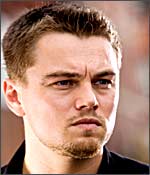
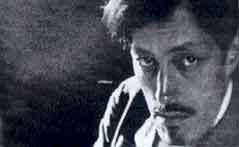

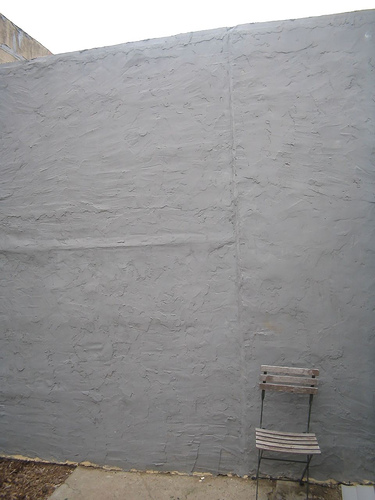
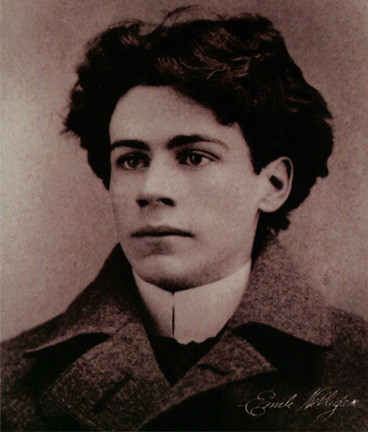
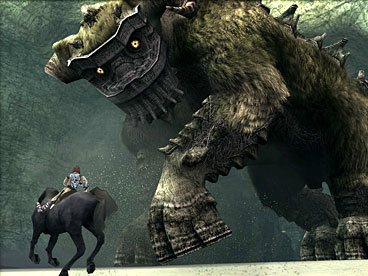


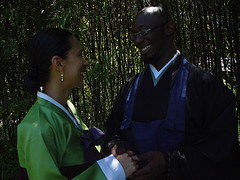
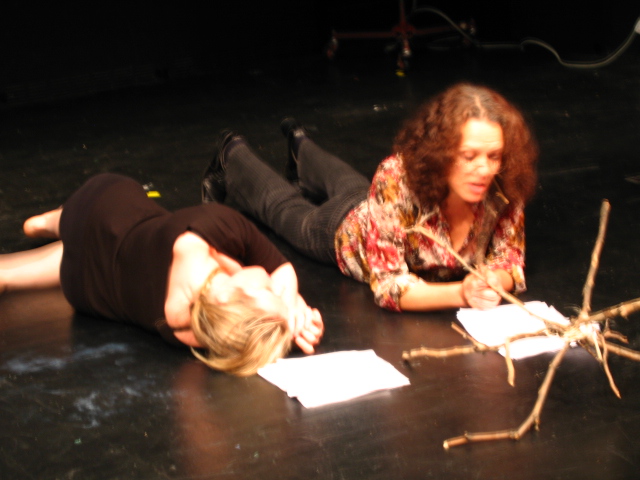
.jpg)
